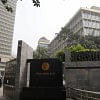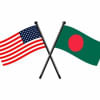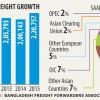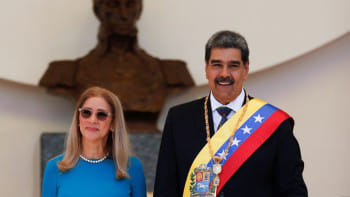Exporters hardly grab orders diverted from China

Bangladesh cannot grab the apparel work orders, which are being shifted from China to other countries, due to lower capacity, weak infrastructure and inadequate supply of energy, exporters said.
China's market share in global apparel trade has been declining over the last few years because of a dearth of skilled workers and the manufacturing shift towards high-end and technological products.
Its market share last year stood at 36.7 percent or $161 billion, down 8 percent year-on-year, according to data from the World Trade Organisation.
In other words, China lost garment work orders worth $14 billion in one year alone to other countries.
On the other hand, the market share of Bangladesh, the second largest apparel supplier worldwide after China, is increasing but very marginally, meaning the country is unable to take advantage of the shifting work orders from China.
In global apparel trade, Bangladesh's market share was worth $28 billion in 2016, up 7.69 percent from a year earlier.
“Bangladesh was supposed to get more of the shifted orders from China, but unfortunately those were received by some other countries like Vietnam, Myanmar and Cambodia,” said Ahsan H Mansur, executive director of the Policy Research Institute.
The Chinese entrepreneurs also made investments in Myanmar, Vietnam and Cambodia, he said, adding that they had a plan to invest in Bangladesh but the country could not manage adequate land, gas and power for the investors.
On the other hand, after the Rana Plaza building collapse in April 2013, the garment sector did not witness any major domestic investment save for the expansion of existing units by big garment companies.
“As a result, a capacity shortage has been created,” Mansur said.
While the number of garment factories was supposed to increase due to abundant work orders from the Western world, China, Japan and some other emerging markets, it did not pan out that way, he added.
Rather, more than 1,000 small factories faced closure due to strict inspection and remediation by the Accord and Alliance, the two foreign building inspection agencies, according to the Bangladesh Garment Manufacturers and Exporters Association. Siddiqur Rahman, president of BGMEA, said Bangladesh is receiving a small quantity of work orders that are being diverted from China. He, however, said the volume of such work orders will rise in near future.
In such a situation, Bangladesh should allow foreign investment in the garment sector and make the special economic zones functional as soon as possible so that the Chinese investors can also put in money in Bangladesh, Mansur added.
Investors from many countries have been lobbying the governments over the years to get permission to invest in garment factories located outside of the export processing zones, but the FDI has been confined to those zones.
“We do not have any problem if foreign investment is allowed in the garment sector. We want the foreign investors to come in the high-end segment and in textile manufacturing so that we get fabrics from the local market,” said Rahman of BGMEA.
Commerce Minister Tofail Ahmed recently acknowledged that there is no official bar in investment in the garment sector by foreign entrepreneurs outside of the EPZs, but usually such investment is not allowed to protect local entrepreneurs.
“However, we will allow FDI in the garment sector in the SEZs as the government has been working to develop 100 such economic zones across the country,” he added.
No SEZ has started functioning yet although the Bangladesh Economic Zones Authority has been working to develop such zones across the country, either by leasing out land to individual local companies or to countries like Japan, India and China.

 For all latest news, follow The Daily Star's Google News channel.
For all latest news, follow The Daily Star's Google News channel. 








Comments